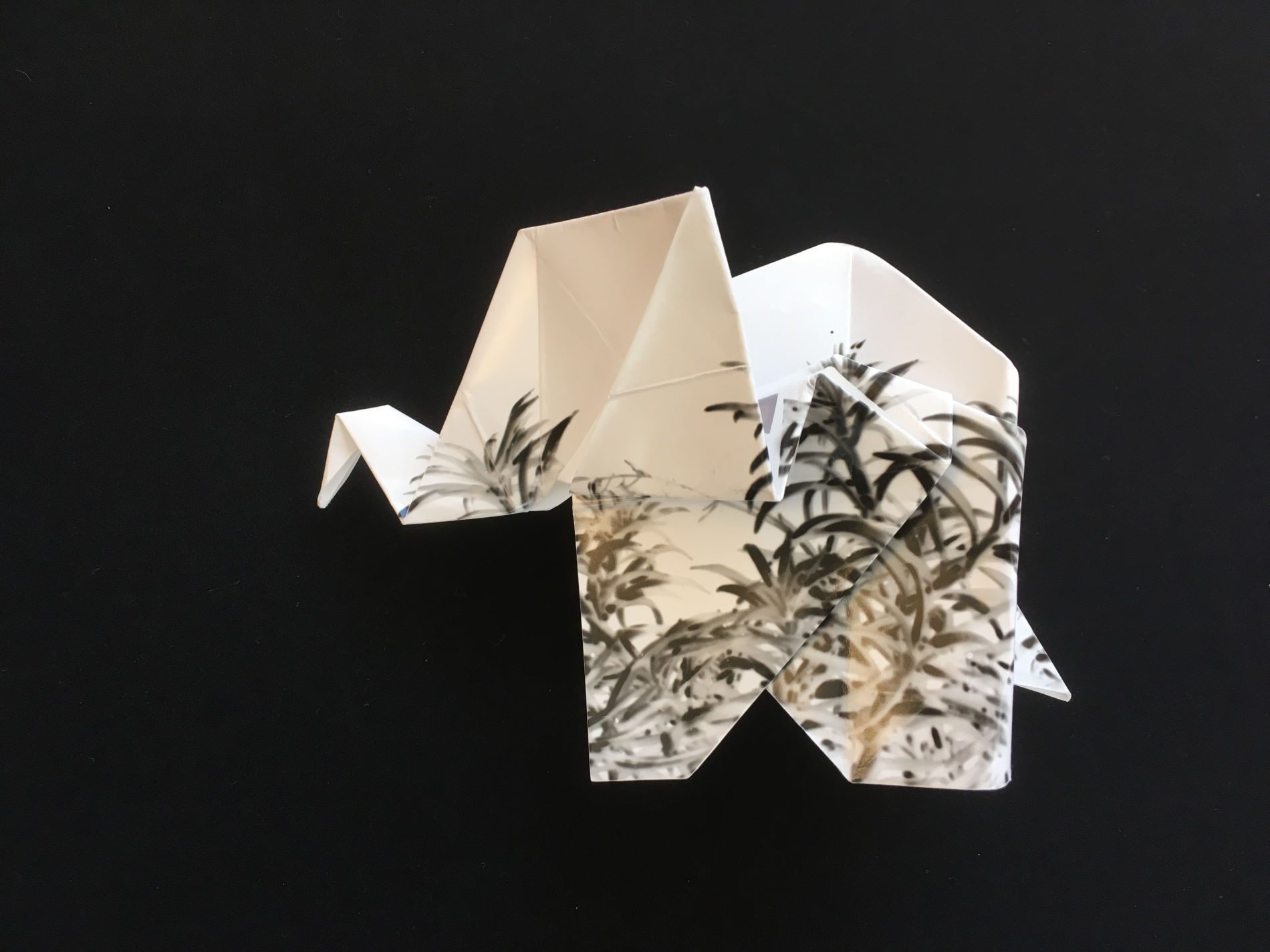The Idea
I love origami. Whenever I need to focus on something I grab a piece of paper and fold something or when I try to follow a talk or simply try to kill time. I don’t keep my objects. Normally I arrange them on a spot which is accessible to the public, leave them and sometimes do pictures of the arrangement. While waiting in the darkroom lobby with Christian, I was folding as we talked. At some point Christian asked me if I could also fold photographic paper. So the idea was born.
Folding PE Paper
The central question was, is it possible to fold objects with PE paper. To find out Christian provided a large sheet of paper which was already exposed. I cut off a square piece 40x40cm and folded an elephant. It wasn’t easy to fold the sheet but the result was OK and it kept its shape even after i dipped it into a basin of water. So it should work in principle.
Going dark
Next step was folding an exposable object in the darkroom. We sticked to the elephant as a model because it was a stable and the box like shape made it easy to do calculations. Those calculations were necessary because it had not only fit into the camera obscura, we also had to make sure that a certain area is exposed and not too much shadow is cast. So finding the size of the sheet was key and adapting some creases to make the final figure stable enough to not unfold inside the camera. It took a lot longer and was way more difficult to produce than it was in white light because it was a lot harder to see some guiding creases. But we managed it.
Loading the Camera Obscura
What we had at that point of project was a light sensitive little white elephant in a light tight, Gaffa supported plastic bag usually protecting photographic paper. Not elephants.
For what purpose? Well, as tricky as simple enough we wanted to create a 3-D sculpture, the cute Origami dude, that seems to stroll around in its natural habitat. So off we went to the darkroom to accurately position and fix the elephant into a 8x10 inches pinhole camera which was pimped for the project. We calculated all three dimensions rigorously and tried to avoid false friends in logics. So upside down the elephant dived into the camera. A mirror was installed inside the camera at a 45° degree angle to make sure left side and right side would show off correctly with the desired result.
We closed the Camera Obscura (CO) and started to built up the jungle-like setup for the elephant. That completed the CO with the “caged” mini jumbo inside was positioned the same way as you would do to create an image of the “plants and ferns” in front of the pinhole.
Exposure
Exposure was according to Zone IV for the green of the “trees”. Background was darkest black which made for Zone I. Light flashed through the opened hole of the CO for 2 minutes, hopefully bouncing correctly on the animal. And we could do nothing more than hope for success.
Development
Back to the darkroom to carefully open the CO and free the still pure white XXL supermodel. The moment of all moments yet to come, the elephant took a shy first bath in the developer. Nothing happened. Nothing. Wrong exposure time? Wrong positioning? 1000 ideas, all not welcome.
Ok, one sadly has to accept, you can hardly point and shoot with a CO. Even less with an elephant inside.
Then, seemingly lightyears later, after about 60 seconds, the feet of the elephant showed some “flora”. Same soon with the legs, the belly, the ears. Even the tail. Now stop please. Please stop, jumbo baby. Not the head nor the back. And, wow, nothing happened. Perfect so far. To keep the white white and avoid even slight gray tone values the elephant had to jump into other watering holes, stop bath and fix galore.
After a long and refreshing bath in a bubbling freshwater pool jumbo dried until all moisture had evaporated. Behind the ears as well.
To make a long story short, we got it: Origami and Photography joined forces for an elephant in its natural environment. Analog from scratch on we call it COrigami.

